
Several internet sites suggest that there are modern Western myths and the following characters are cited as examples: the Code Fairy, Easter Bunny, Father Time, the Grim Reaper, the Invisible Pink Unicorn, J.R. Bob Dobbs, Lady Luck, Mother Nature, Santa Claus, and the Tooth Fairy. Does this claim of the existence of a modern Western mythology withstand scrutiny? Each character will be looked at individually and an overall conclusion will be arrived at. Myths, as opposed to stories in general, in this article are assumed to explain phenomena and elicit or elicited some degree of belief in this explanation. People no longer believe Zeus creates thunder but Zeus is still a myth because people once believed in that explanation of thunder.
Generally, the Code Fairy is considered a very weak example of a modern Western mythology. The Code Fairy is a fictional spirit said to eat semicolons and curly braces from computer source code. The Code Fairy is an example of folklore mythology which non-programmers know is fiction, but which is sometimes presented by computer programmers as fact, as a way to explain how a computer program stops working after compiling it, without altering the source code. The explanation is silly but further analysis may yield a surprising result. While probably programmers do not believe in a code fairy as such, the code fairy is a safe way for a computer programmer, who is supposed to be hyper rational, to suggest sometimes things do go bump in the night in a way that cannot be explained even in the rational world of programming.
The code fairy is a good example of a post-modern myth which overtly deconstructs the concept of the myth while at the same time providing a covert mythological function. The code fairy pretends to be a non-myth or parody of a myth. Covertly the Code Fairy allows for the communication of how some phenomena defies explanation even in an area of human endeavor where explanation and control should always be possible. Humans rely on computers more and more and any suggestion by computer professionals that computers are affected by hard to define influences is disconcerting in the extreme. The Code Fairy is also a safe way to express anthromorphic views about computers that are not acceptable in a positivistic work atmosphere but do play some part in the thinking of humans no matter how rational they are expected to act in public. The Code Fairy with its contradictory explanatory functions is probably
better classified as a postmodern rather than modern myth.
The Easter Bunny is supposed to bring Easter eggs to an outside area and then the children look for the hidden Easter eggs. Both rabbits and eggs are ancient symbols of fertility and the Easter Bunny can be seen as an updated version of customs going back to Roman times. The Easter Bunny is an ancient symbol revamped but not necessarily an ancient myth. Rabbits and eggs do not explain fertility but represent fertility. The Easter Bunny is often classified with the Tooth Fairy and Santa Claus as an example of a modern mythical figure. I disagree! The Easter Bunny is different from Santa Claus and the Tooth Fairy in that children are not taught to actually believe that the eggs are planted by the Easter Bunny but rather the Easter Bunny story is understood to be a fanciful story even by children. The Easter Bunny is not a mythic figure but a story with older symbolic origins that is used to amuse children.
Father Time is a modern version of Chronos the Greek
god of time. People do not believe that Father Time does exist but the origins of Father Time in prior myth means that Father Time can be considered a newly named myth rather than just a story.
The Grim Reaper is a modern version of Death. The idea of a skeletal figure that brings death to people is quite ancient. Like Father Time, the Grim Reaper can be seen as myth that once was believed in under a different name.
“The Invisible Pink Unicorn (IPU) is the goddess of a parody religion used to satirize theistic beliefs, taking the form of a unicorn that is paradoxically both invisible and pink. She is a rhetorical illustration used by atheists and other religious skeptics as a contemporary version of Russell’s teapot, sometimes mentioned in conjunction with the Flying Spaghetti Monster. The IPU is used to argue that supernatural beliefs are arbitrary by, for example, replacing the word God in any theistic statement with Invisible Pink Unicorn. The mutually exclusive attributes of pinkness and invisibility, coupled with the inability to disprove the IPU’s existence, satirize properties that some theists attribute to a theistic deity”. No one believes in the IPU. The IPU has modern origins unrelated to prior myths. Clearly the IPU is not a myth but a critique of myth.
J. R. “Bob” Dobbs is the figurehead of the Church of the SubGenius. His image is derived from a piece of 1950s clip art. According to SubGenius dogma, “Bob” was a drilling equipment salesman who, in 1953, saw a vision of God (JHVH-1 according to Church scriptures) on a television set he had built himself. The vision inspired him to write the “PreScriptures” (as described in the
Book of the SubGenius) and found the Church. The theology holds that “Bob” is the greatest salesman who ever lived, and has cheated death a number of times. He is also revered for his great follies and believed to be a savior of “slack”.
J.R. Dobbs has similarities with the IPU in that both are modern, artificial creations that have mythic properties in order to deconstruct the idea of a myth in the first place. Both also serve a satirical function with the satirical function of J.R. Dobbs being more prominent than in IPU discussion.
IPU has a more philosophical tone. J.R. Dobbs like the IPU is not a myth but a critique of myth.
Lady Luck is a modern incarnation of the Roman goddess of luck, Fortuna and is therefore like Father Time and the Grim Reaper an old myth given a new name and therefore is myth due to origin. While modern thinking probably does not allow for the personification of luck most human probably do believe in good or bad luck. People are assumed to have good or bad luck. People commonly believe in lucky numbers and lucky days. Comic books refer to stochastic fields that characters like the Scarlet Witch can generate to create hexes but this is of course scientific mumbo jumbo. The idea of luck as an explanation contrary
to a purely scientific, materialistic view of the universe is alive and well.
Mother Nature is yet another example of a modern incarnation of an older mother of the Earth that has existed in many pantheons of the past. One version of ecology suggests that Earth is a synergic ecological whole that can be referred to as Gaia. This suggests that Mother Nature exists as myth both due to origin and reintegration into our scientific positivist world view via modern ecological conceptualization.
Santa Claus
“Santa Claus, or “Santa“, is a figure in North American culture with legendary, mythological and folkloric aspects who developed from an amalgamation of Dutch Sinterklaas, English Father Christmas and other traditions of Christmas gift-bringers. Santa Claus is said to bring gifts to the homes of the good children during the late evening and overnight hours of Christmas Eve, December 24.”. Santa Claus is a myth due to origin but beyond this Santa Claus is a belief held by young children in the present. Young children in many countries do believe in Santa Claus. If you like Santa then you will love My Asian Adventures as Santa Claus.
Tooth Fairy
The belief in faeries is a very old one. The Tooth Fairy like Santa Claus, and unlike other characters on this list, is a myth both due to origin and due to the fact young children believe in the Tooth Fairy. Upon closer examination characters that are lumped together as examples of modern Western myths do not belong together. The IPU and J.R. Dobbs are not myths. Santa Claus and the Tooth Fairy clearly are myths because of origin, explanatory power and most importantly children believe in them. Other characters on this list can be seen as myths due to origin rather than in the fact that they are believed in currently. Mother Nature
is myth given new scientific identity. Analysis of the Code Fairy shows that a new type of myth may have evolved in the 20th century. The Tooth Fairy has both an overt and covert message. Overtly the construct is satire but covertly the construct is explanation. The Code Fairy may be a new type of postmodern
myth.
WereVerse Universe Baby!










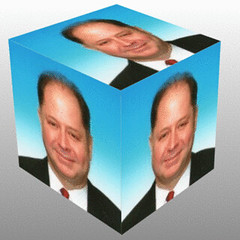

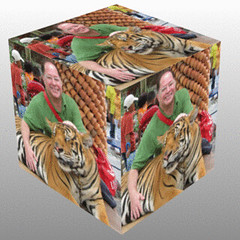

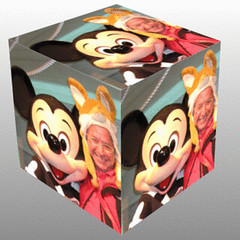
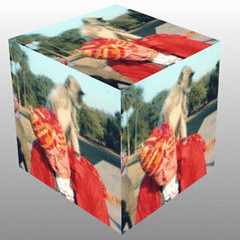
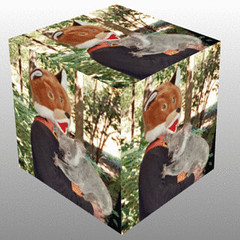


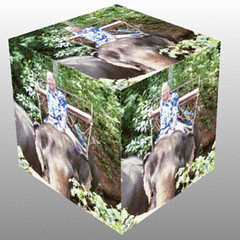
Santa Claus may actual be more closed drawn from the true man: Saint Nicholas, or the German Sankt Niklaus (which, through bastardization over the years, becomes Santa Claus. Sinterklaus is a derivation of this as well. All are one man: Saint Nicholas,who actually did bring gold to young women who could not afford a dowry.
Thanks for the interesting information!